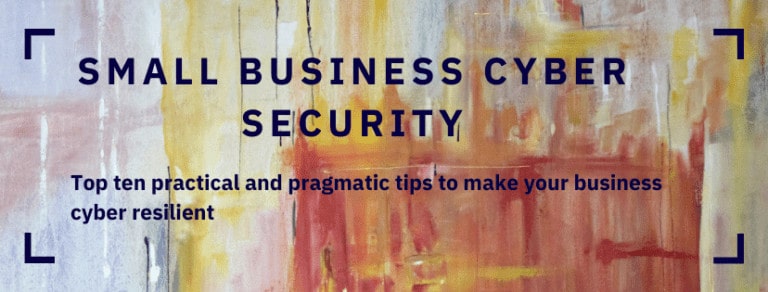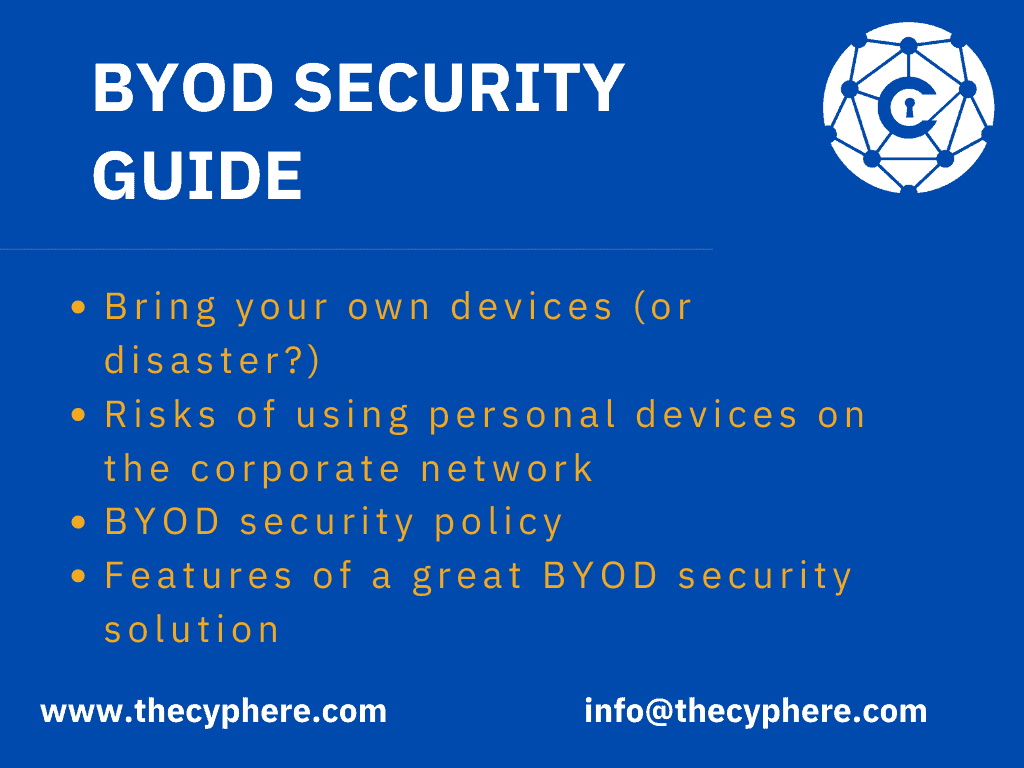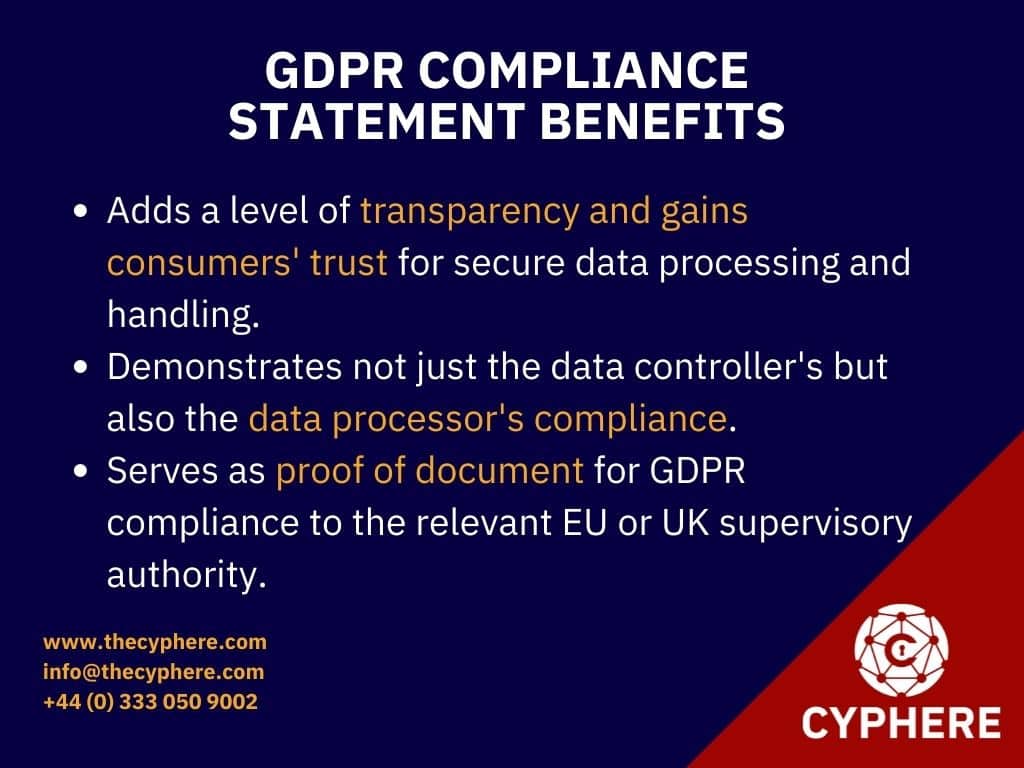
The internet has become a ubiquitous part of our lives. People can do anything from learning to shopping, to networking online. This is great for small businesses and individuals who want to reach a larger audience with their products or services. The downside is that cybercriminals are becoming more sophisticated and they are targeting business owners specifically in order to steal their data and compromise the integrity of their company’s systems. In this article, we will discuss cyber- security solutions for small businesses that will help safeguard protect your business from data breaches and keep you safe online!
Small business cyber attacks
The digital landscape is increasingly becoming a hostile environment for small businesses to operate in. SonicWall reported over 623 million ransomware attacks and 442,000 pieces of new malware globally in 2021 alone – a staggering number that can easily overwhelm unprepared entrepreneurs. With ransomware attacks on the rise, it is more important than ever for small business owners to have a cyber security plan in place and what to solve first, a priority list.
From a small business security aspect, it is more important than ever to be aware of your unknowns. SMBs (Small and medium businesses) are a target due to their lack of preparedness regarding people, process and information technology alone. This excuse, “my computer has no top-secret data,” doesn’t work anymore. Gone are the days when only a handful of systems hold sensitive business data in a separate environment. Our experience with SMBs helped us develop the top ten practical and pragmatic tips that would boost cyber security for SMBs. All this with more thought, less chaos of big spend products.
Feel free to watch this video containing links to a condensed version of the article.
https://www.youtube.com/watch?v=Yudbl_e4a_s
Cybersecurity for small businesses, Do we really need it?
Yes, they do. One of the most common mistakes is that small business directors believe their company to be too small for a cyber attack. The truth is your organization may not have been targeted yet but you can’t afford to take any chances; it’s vital that you protect your employees and yourself with strong security measures before something unfortunate occurs–whether it’s an employee, insider or external threat.
Multiple references are available online, showing how small businesses websites or IT assets are exploited by cyber criminals, costing billions of $ worldwide.
Interpol reports show an alarming rate of cyber attacks demonstrating COVID-19 impact on small and medium-sized business categories. Cybercriminals exploit the fear and uncertainty factors caused by the unstable economic situation due to the pandemic. This goes without saying that we shall see more sophisticated malware and newer ways of stealing information such as sensitive data or banking information and how cyber criminals’ attacks.
What are the top cybersecurity threats facing small businesses?
Small business owners are faced with many cyber threats, when they have to deal with cybersecurity. Some of these include:
-
Phishing
-
Malware/Virus
-
Spear phishing
-
Ransomware attack
-
Advanced Persistent Threats (APTs)
Threats like APTS can be hard for small businesses because they don’t have the resources that larger companies would, and it’s difficult to know what you’re up against. However, there are some things small businesses should do in order to make an easier job defending themselves from these cyber threats and security risks. This article covers a list of top ten tips for small business cybersecurity.
How can I make my business cyber secure?
Our aim with this small business IT security checklist is to give resources to help organisations without a ‘big spend product approach’. Although not all the following tips for a small business would be a breeze, a strategic plan with carefully selected actions would make tangible differences in the medium to long term timescales.
There are many things one should consider when looking at how best to secure their company.
The kinds of data you risk you handle: Think about whether your small business handles sensitive customer data online, information and other things that could put people in harms way. If so, protecting this and other vital data, should be a priority.
How much money are you willing to spend? It’s important to budget money for a cybersecurity strategy as part of the overall IT investment because it is now one of the most critical aspects of any company’s infrastructure. Consider how much equipment protection will cost and what kind of service plan would work best for your company needs.
Small business cyber security plan
A small business cyber security plan is a critical tool for any organisation to protect their data and digital assets from malicious attacks. This plan helps businesses prepare for the unexpected by developing strategies, protocols and tools to reduce their risk from cyber threats. By having a comprehensive security plan in place, businesses can protect their sensitive information other vital data from theft or damage, as well as protect their customers and employees from online fraud.
When designing such a plan, org’s should take into account all the different aspects of their business operations – from customer data to financial records. For example, they should include processes for securely storing sensitive information, such as encryption or two-factor authentication; password protect it; procedures for responding to a serious data breach, or attack; and measures to ensure the safety of customers’ private data. Additionally, they should develop a comprehensive policy on security awareness training for employees, so that everyone in the organization understands the importance of cyber security and knows how to protect customer information and themselves online.
Finally, organisations should consider investing in security insurance, which can provide coverage for losses related to a data breach or other cyber incidents. Although this is a topic within the cyber security domain, a small company could easily get this for free as part of cyber essentials certification.
Business benefits of having a cyber security plan in place
Having a security plan helps you on multiple fronts with these top benefits:
-
Prepare for the worst
-
Be compliant with the data security compliances and regulations
-
Demonstrate data security commitment to your customers and suppliers
How to prepare a small business cyber security plan?
Creating a cyber security business plan is essential for safeguarding against various threats that could potentially cause major damage to the intellectual property of your company. By following the steps outlined below, you can create a comprehensive plan that will help protect your digital assets, minimise risk and ensure compliance with regulations.
1. List Your Digital Assets
Not only computers and mobile devices, but also network infrastructure, databases, customers’ information, software, data systems and any other digital asset should be identified and listed. This is important to ensure that all assets are protected and accounted for. Additionally, it will help identify which assets are critical to the functioning of the organisation, and which can be used as backups in case of an incident physical theft.
2. Identify Your Vulnerabilities
Once your digital assets have been listed, it’s important to identify the potential threats that could lead to their compromise. Common risks include malware to steal information or install malicious software, poor or non-existent encryption, unsigned or unencrypted emails, weak credentials, misconfiguration, outdated or unpatched software, unsigned or malicious software, and employees negligence/misconduct. It’s also essential to ensure that employees are trained on proper security protocols to minimise risk even further.
3. Determine Compliance With Laws and Regulations
Depending on where you are located and what type of business you run will determine what laws and regulations must be complied with. For example, the Data Protection Act 2018 for the UK, or California’s The California Consumer Privacy Act (CCPA). Additionally, if your business or data regularly handles sensitive data you may be required to comply with the EU General Data Protection Regulation (GDPR), or the European Union payment service directive (PSD2). If you accept credit cards, you must also comply with Payment Card Industry Data Security Standard (PCI DSS).
4. Create a Risk Assessment Chart
This chart should identify the most critical aspects of your company and detail their associated potential risks. Evaluate each risk level and determine which threats could prove catastrophic to your operations. This will help create an actionable plan to minimise risk and protect digital assets.
5. Outline Security Policies to Mitigate Risks
To mitigate the risk of cyberattacks, it’s important to implement security policies such as keeping all software and operating systems up to date and patched, encrypting all web communications, signing and encrypting emails with a digital certificate, encrypting stored credentials with strong passwords, change passwords where default or easy to guess passwords are in use, installing and selling only signed software and managing employee access privileges. Additionally, ensuring employees are properly trained on security protocols is essential.
6. Build Your Plans
This final step should include plans for incident response, business continuity, disaster recovery and any other relevant plan that will help protect your organisation in the event of an attack or breach. It’s also important to review these plans regularly to ensure they are up to date.
By following these steps, you can create a comprehensive and actionable cyber security plan that will help protect your business against threats, minimise risk and ensure compliance with legal regulations. Additionally, if you need extra help with any of these steps, it’s always best to seek the advice of professional cyber security consultants. We offer free consultations around security strategy or specific concerns.
Cyber security tips for small businesses – 10 actionable steps
Security is a very complex and constantly evolving field. It can be difficult to understand all of the different ways that cybercriminals are targeting small businesses, so we will break it down into ten simple steps that are practical. Learn our top tips on strengthening small business cyber security and preventing the most common cyber attacks.
0. Less is More
Start small. Assess the most critical assets to your org, review their current situation and leverage the current tools at hand. These include cloud services, free/inbuilt host firewall, anti-virus solutions and maximise the use of active directory (assuming it’s present). This responsibility starts from the top, with cultural change around business information security knowledge and education amongst the stakeholders as a starting point. Questions, discussions and more brainstorming follows the answers needed by the organisation to acknowledge and improve the posture for small company.
More products = more chaos!
People + Process + Tech = cyber security maturity
Utilise independent cyber security experts such as organisations such as Cyphere to review the current tech stack to leverage the already present never utilised features. After this phase, you whole company can set up a strategic plan to support and introduce new products/solutions as necessary for organisation.
1. Endpoint Protection
Endpoint refers to end-user systems or devices such as laptops, desktops/workstations and mobile devices. These endpoints serve as an entry point to an organisation. For example, a threat actor successfully establishing a connection with a staff computer due to a phishing attack (or another form of attack) is due to malicious code bypassing the endpoint controls. Therefore, the security of entry points is important by utilising various antivirus software or anti-malware solutions that detect suspicious activity and deter such attempts. Additionally, after implementation, it is important to ensure full system-wide scans are performed periodically and regular vendor updates.
2. Network Segmentation
It is the most underrated control without doubt. Just like a submarine structure, you need to ensure there are different compartments within your organisations. If a cyber attack has led to the compromise or breach of a system or segment of the corporate network, an attacker will not have immediate access to breach the entire organisation due to such network security measures. This may lead to limited impact, containment or detection of the breach or intrusion activity based on the incident scope.
3. Principle of Least Privilege
Apply the rule of least privilege. This concept relates to the implementation of privileges on the need to know basis. In case of a system compromise, threat actors shall face increased resistance to escalate their privileges. Any requirements related to compliance, framework or standards would be a breeze. There are several tools and tactics:
-
Privileged Access Management
-
Network segmentation
-
Separation of Privilege
-
Systems Hardening
See this Microsoft guide to implementing Least-Privilege Administrative Models across Windows systems.
4. Secure Internet Access
:Internet connection is the backbone of any business in social media. Since the rise of remote office working during and post Covid-19, this is even more important in our lives in social media.
-
Ensure that a restricted internet use policy for employees is served via emails, meetings and contracts (where needed).
-
If there is a web proxy, filter or internet traffic access solution in place, order an immediate review to ensure it serves the intended purpose. If there is no such software in place, deploy internet filtering solutions.
5. Passwords and use of password management software
Change default passwords on online accounts and use strong passwords on all equipment such as wireless access point or Wi-Fi network controllers, network devices, printers, scanners, security monitoring devices.
If possible, implement and mandate the use of a strong password manager for your small business. This, although it may require users to acknowledge and support the new software usage, shall offer customers multiple benefits in the long run, for example, install security apps such as:
-
Cultural shift towards the importance of security for businesses
-
Offering an easier alternative for hard to remember, randomly generated non-dictionary long and complex passwords
-
Allowing users to select different passwords for different services
-
Separating their personal information (the football team or dogs’ name that they may be used as password otherwise) from office.
6. Multi-factor Authentication
Implement multi-factor authentication on all your devices and internet-facing portals. At times, small business owners or employees’ credentials could be compromised without any cyber attack activity linked to your organisation. This technique, known as credential stuffing, is a type of cyber attack where stolen account credentials from one service are used by gaining access to other accounts on the internet.
7. Secure Configuration
Secure configuration is important for all systems used within or outside the organisation. This includes a mobile device management solution to control mobile devices. Operating system hardened images used as a secure operating system base and secure hardening based network equipment configurations. CIS benchmarks are a great start to prepare internal checklists covering patch management, system hardening, services configuration and many other areas. If your mission-critical assets, such as a revenue-generating website or storing critical data, are scope for pen test then opt for a penetration test at least once a year or after any major changes. This would pick up on the various cyber attacks that target retail or your business-specific websites, infrastructure. In the case of website security of a small business, website hardening measures along with anti-DDoS and WAF services at the front should be deployed. If you need free advice around this, please get in touch to understand how we help strengthen website security without product spends.
8. Secure and Regular Backups
Backups are an essential part of your business’s cyber- security program and strategy. In the case of a cyberattack, critical data could be either compromised or deleted. Given the SMB businesses lacking strict processes and procedures, there is a large amount of sensitive data being on staff laptops and mobile devices (tablets, phones). Ensure that a secure and regular backup policy is in place. This includes utilising a backup solution that allows the automatic ability to schedule backups.
Use the cloud. Modern devices, software and services offer easy access to cloud-based backups. This offers multiple benefits such as remote backup schedule configuration support, secure storage and easy restores accessible from anywhere.
9. Phishing
Your employees could be your strongest or weakest link in your organisation. It all depends upon your IT security strategy.
-
Regular, thorough training must be an investment to deliver a baseline of knowledge for all employees. This initiative to train employees would mark a shift in company culture with time, ensuring an overall boost for a proactive approach towards information security.
-
Ensure that staff don’t browse the web or check emails from servers or using administrative privileges. This will reduce the impact of attacks in the event user details are stolen.
10. Secure Wireless Networks
-
If your business uses a Wi-Fi network, corporate or staff network must be segregated from the guest (visitor) network or vice versa. It is important to ensure this segregation is strictly implemented on both the networks to keep trusted and untrusted users separate.
-
For corporate Wi-Fi networks, certificate-based authentication is the recommended authentication mechanism. This ensures user and connecting device identities are validated and cannot be spoofed.
-
Implement a captive portal to manage guest network access for visitors.
Logging and monitoring, secure communications, in-depth reporting procedures, active directory protection are further areas of risk that an organisation should consider in the long run to protect your employees work and small business from cyber risk-. Just before you decide to go on a shopping spree…
How do small businesses create effective security policies?
Apart from technical controls, it is important to have cyber security program, processes and policies to protect your customers and own business from cyber threats,. Developing a full security program set reporting procedures and policy is an important step. A company needs to determine:
-
Who has access?
-
Where are the sensitive files stored and what kind of settings of protection software should companies do they have?
-
What data flows from one system or network to one employee to another, and how can it be protected?
-
How does management keep up with new risks and threats that might emerge as technology evolves? This may take additional resources to include outsourcing some functions like antivirus software updates or upgrading devices.
It is essential for small businesses to develop appropriate policies based on their specific information security settings and systems activities before embarking on a ransomware attack or any other strategy against cyber criminals.
Make informed choices before buying security products.
After implementing the above-mentioned measures, an organisation should opt for a cyber health check (or IT security health check for example) to assess their cyber threats (and improvement). This independent exercise should detail gaps around the organisations’ public networks, people, processes and technology in use.
Good to knows
-
Don’t buy a product you heard about from another peer or at an event. Every network is different.
-
Don’t rely on your IT/managed service provider to solve all your data protection troubles.
-
Don’t select a single vendor who says they will do it all for you.
-
Review the usability and security balance regularly to ensure IT security is an enabler for growth.
A layered approach to cyber security delivers effective protection designed to add protection for small businesses. To learn more, you can check more blog entries for more articles.
Conclusion
The internet has made it easier for hackers to break into an organisation’s data and steal valuable information. As cybercriminals increase their efforts, so should you in protecting your company against them. These ten top tips are the best way to keep your small- business network safe from hackers, scammers, malware or any other threat lurking on the web. Whether you have an IT staff member with cybersecurity knowledge or not, these security measures will help you provide additional protection against the most common cyber attacks. If there is one thing that we hope this blog post has helped you learn about securing a small-business network it is this: don’t wait until it’s too late! You need protection now more than ever before; act today.
Get in touch to discuss your security concerns.
Harman Singh is a security professional with over 15 years of consulting experience in both public and private sectors.
As the Managing Consultant at Cyphere, he provides cyber security services to retailers, fintech companies, SaaS providers, housing and social care, construction and more. Harman specialises in technical risk assessments, penetration testing and security strategy.
He regularly speaks at industry events, has been a trainer at prestigious conferences such as Black Hat and shares his expertise on topics such as ‘less is more’ when it comes to cybersecurity. He is a strong advocate for ensuring cyber security as an enabler for business growth.
In addition to his consultancy work, Harman is an active blogger and author who has written articles for Infosecurity Magazine, VentureBeat and other websites.












